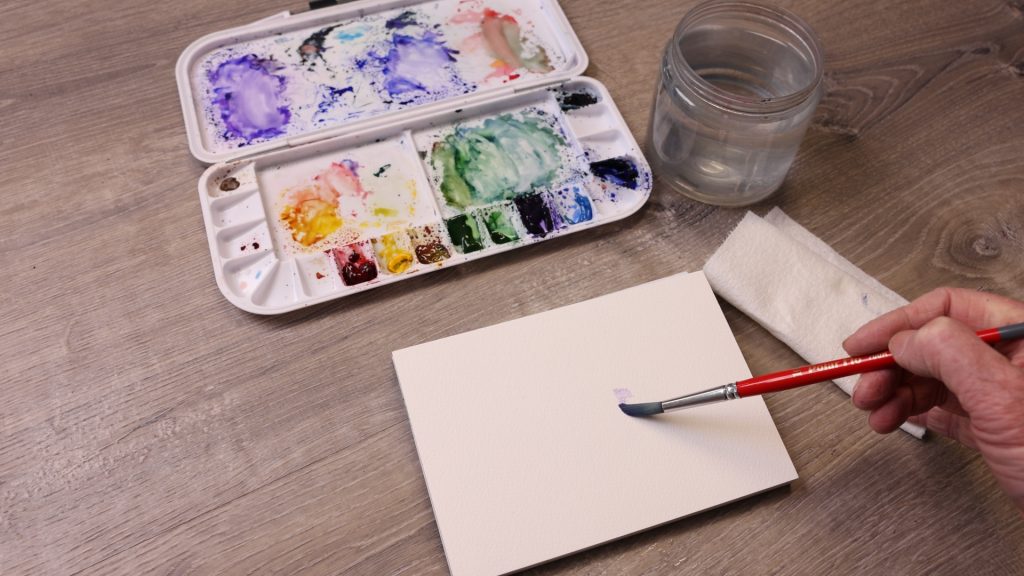When painting with watercolor – as a beginner – it can be a struggle to get familiar with the technique to keep your medium from drying too quickly. When the paint dries fast it makes blending difficult and causes unwanted harsh edges. This can be especially frustrating in dry climates, warm rooms, or when working with certain types of paper. If you struggle with your watercolors drying too fast, here are some practical solutions to keep your paint wet for longer and improve your painting experience.
1. Adjust Your Environment
Control Temperature and Humidity
- Increase humidity: Use a humidifier in your workspace to slow down drying time. A humidity level of around 50-60% is ideal for watercolor painting.
- Lower the room temperature: Hot air speeds up evaporation, so keeping the room cooler can help.
- Avoid direct sunlight and drafts: Painting near open windows, fans, or heaters can dry out your work faster than you’d like.
Use a Misting Spray Bottle
Lightly mist your palette, paper, or even the surrounding air with clean water to maintain moisture levels. A fine mist helps without making the paper too wet.

2. Choose the Right Paper
Use a High-Quality, Heavier Paper
Thicker paper (140lb/300gsm or higher) absorbs water more slowly, giving you more working time. Cotton-based watercolor papers retain moisture better than wood pulp papers.
Pre-Wet Your Paper
For techniques like wet-on-wet, lightly dampen the paper with a sponge or spray bottle before applying paint. This allows for smoother blending and prevents quick drying. You can also wet the back of the paper or with heavier paper you can completely soak the paper then set it on your board to paint.
3. Modify Your Painting Techniques
Work in Small Sections
Instead of trying to paint large areas at once, focus on smaller sections to maintain control over drying times.
Use More Water in Your Mix
Adding extra water to your paint keeps it fluid for longer. However, be careful not to over-dilute your colors.
Layer Strategically
Instead of applying thick paint all at once, use gradual layering to build color while keeping areas wet where needed.
4. Use the Right Paint and Palette
Choose Slow-Drying Paints
Some watercolor brands dry faster than others. Try using brands like Daniel Smith or Winsor & Newton, which tend to stay wet longer on the palette.
Use a Stay-Wet Palette
A stay-wet palette with a damp sponge or paper towel can help keep your paints moist for extended periods.
In conclusion
If your watercolors are drying too fast, adjusting your environment, choosing the right materials, and modifying your techniques can make a huge difference. Experiment with these tips and find what works best for your style and climate. With a little preparation, you’ll have more control over your painting process and achieve smoother, more blended results!
